I was asked in the comments to this project what the sensors report when it rains.
While I did take note of some rain days (the zone pages and the sensor pages in the Mud-Py web-site have notes fields for just such things,) I found that I can locate rainy days from the collected data - despite there not being any sensor specifically dedicated to detecting rain.
There are two signs of rain that show up in the recorded data.
The first is that the battery voltage of the control nodes dips on overcast days.
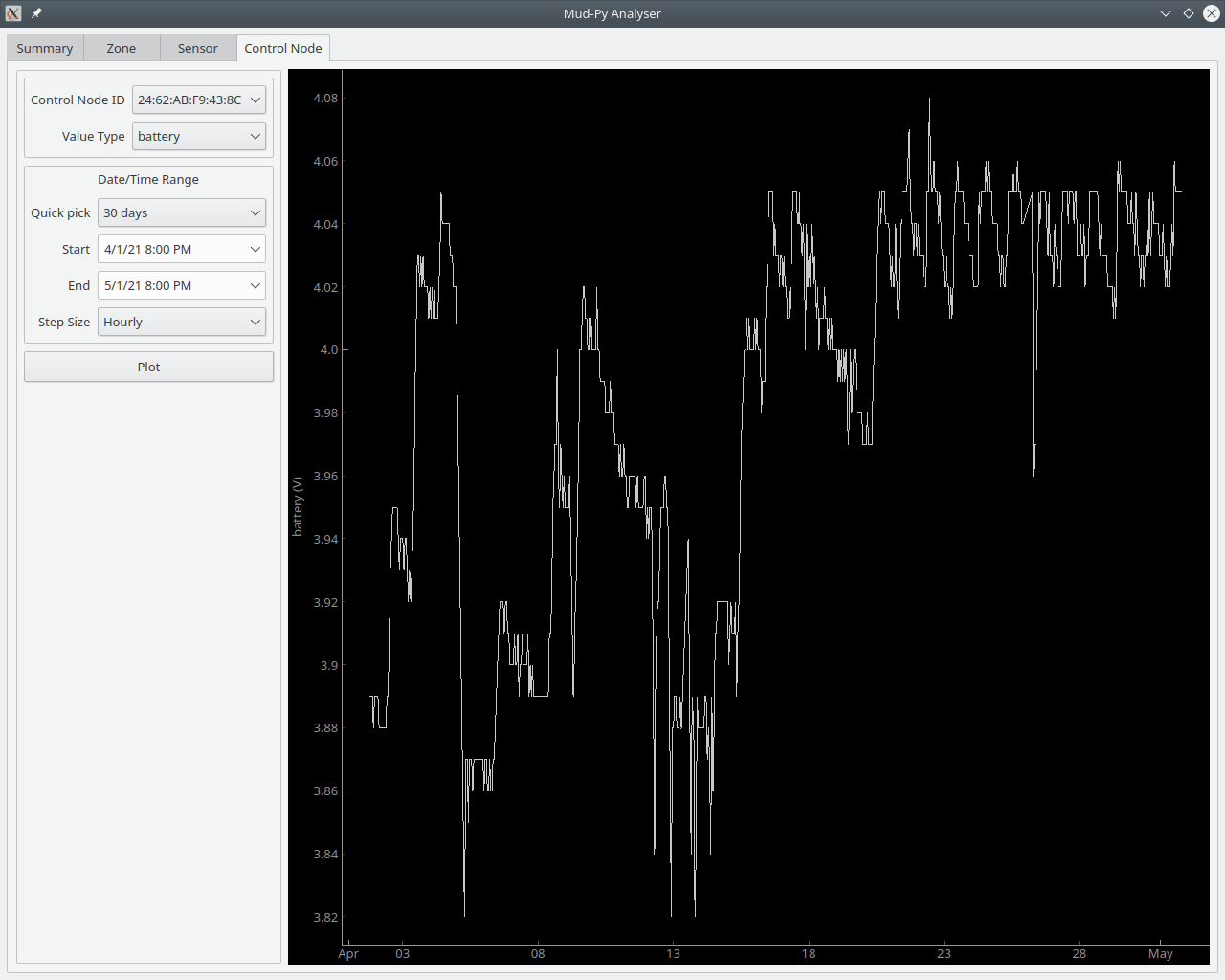 That's the battery voltage of one of the control nodes over the last thirty days. The early part of April was rather nasty, weather wise, and it shows in the battery voltage. The solar cells weren't getting enough sun to fully charge the battery. Since about 20 April, things have been better. The battery voltage zig-zags over the day and night cycle, but it has stayed rather high.
That's the battery voltage of one of the control nodes over the last thirty days. The early part of April was rather nasty, weather wise, and it shows in the battery voltage. The solar cells weren't getting enough sun to fully charge the battery. Since about 20 April, things have been better. The battery voltage zig-zags over the day and night cycle, but it has stayed rather high.The other way that rain shows up in the data is in the "readtries" pseudo-sensor.
The control nodes will try up to four times to read the data from each sensor. They report that count as part of the sensor data.
I originally intended to use that to determine if I needed to reassign sensors to a closer control node. I did actually make use of that during the first few days I had the sensors outside, and reassigned some of them to get more reliable connections.
The "readtries" count goes up when it rains. The sensors are read with Bluetooth low energy. The low power and high frequency make it susceptible to interference from rain - rain drops can block or scatter the signal enough to cause read errors.
It is also likely that rain water on the sensors (and the jars protecting the control nodes) blocks the Bluetooth signal rather than just the falling rain.
This is the "readtries" count for one sensor for the last 30 days:
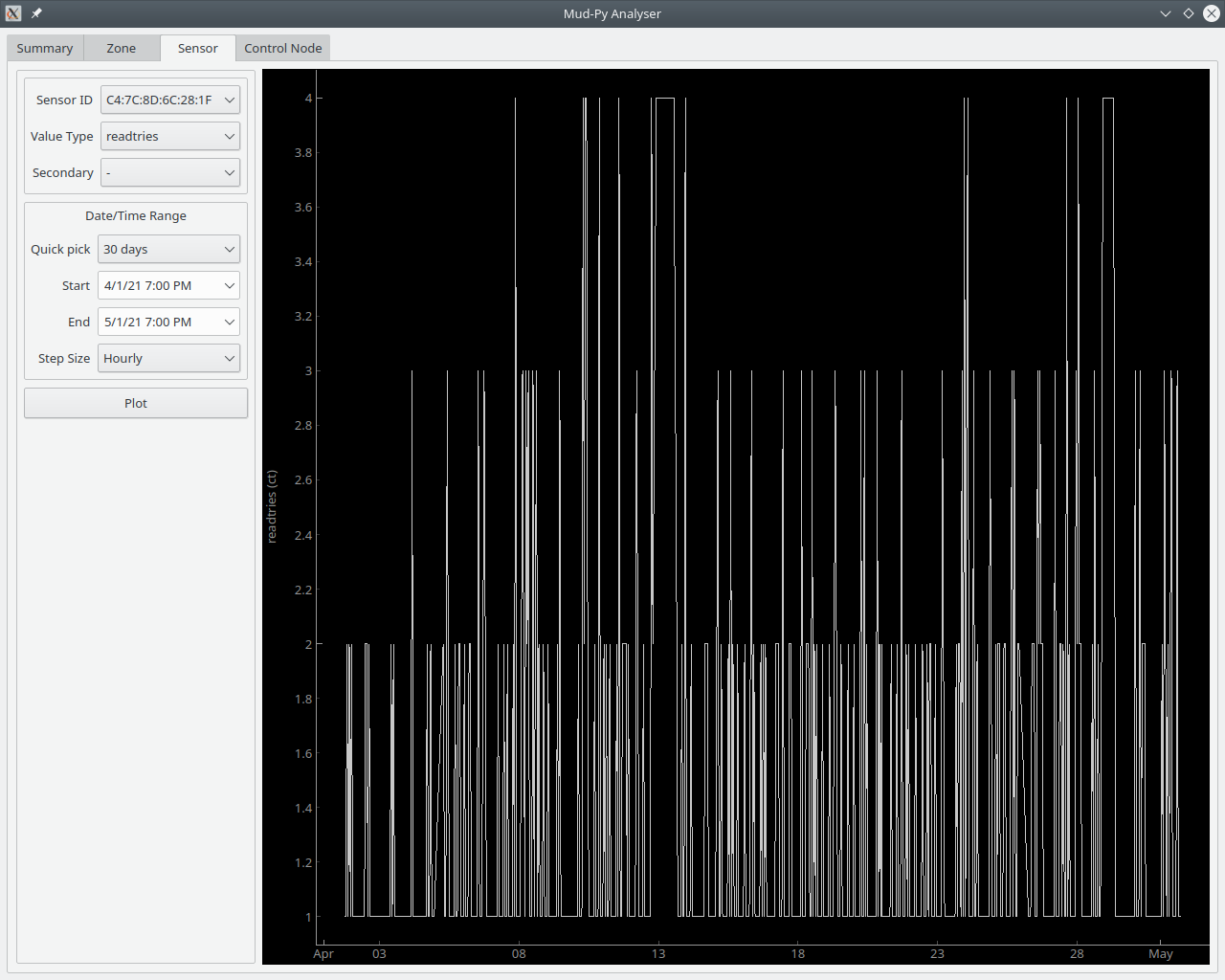 Most of the time, it is read on the first try. It often gets up to two tries, and sometimes three. Between 8 April and 13 April, it has periods where it gets up to four tries. That's when it rained here.
Most of the time, it is read on the first try. It often gets up to two tries, and sometimes three. Between 8 April and 13 April, it has periods where it gets up to four tries. That's when it rained here.This is about 2:00 PM on 11 April:
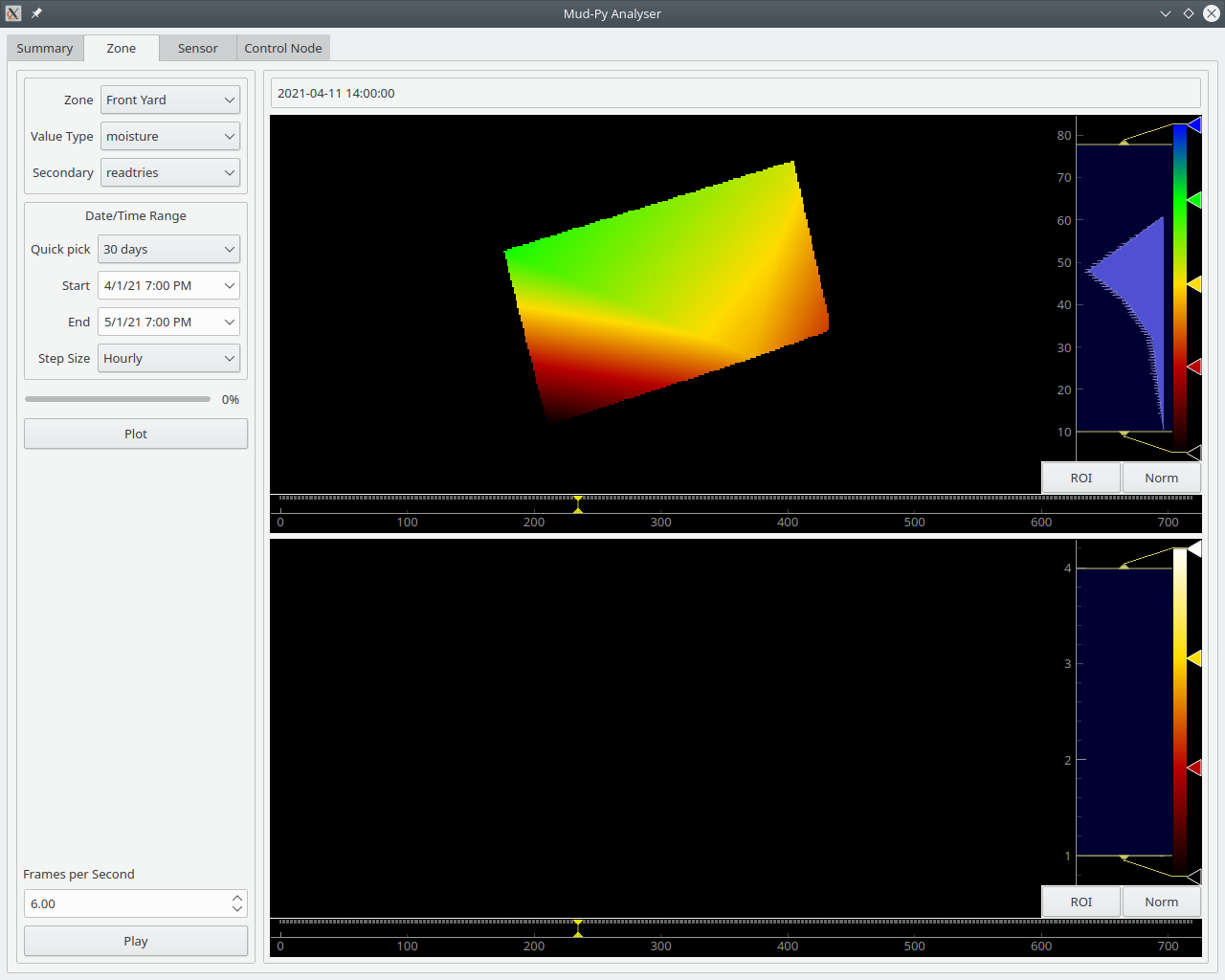
The "readtries" is black - low values, no trouble reading from the sensors. The corners of the yard down by the street are somewhat dry.
At about 3:00 PM, it starts raining:
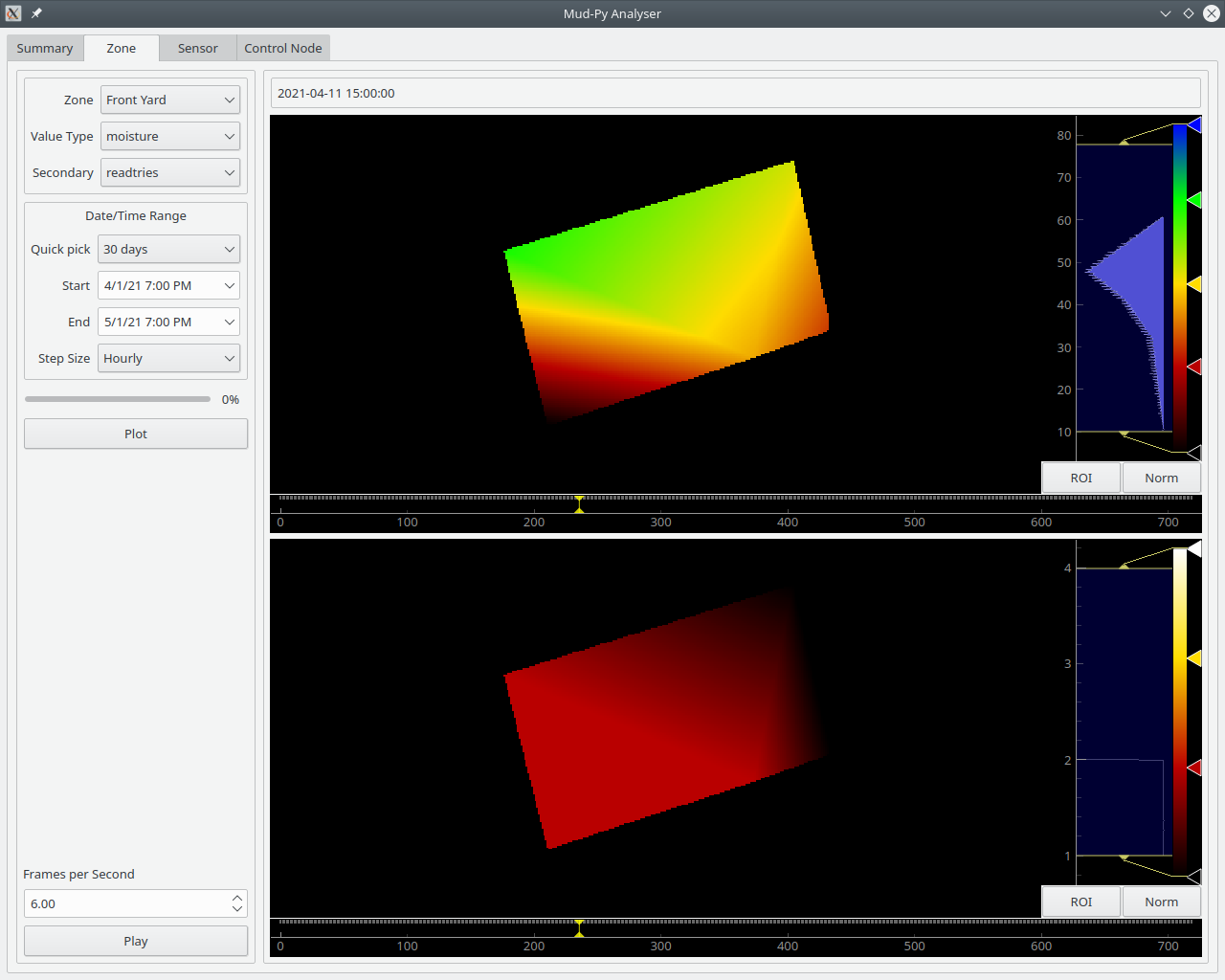
The "readtries" goes up over the whole yard. It hasn't rained enough to make any difference yet.
At about 4:00PM, the rain has slacked off. The "readtries" has dropped, but the soil moisture has risen:
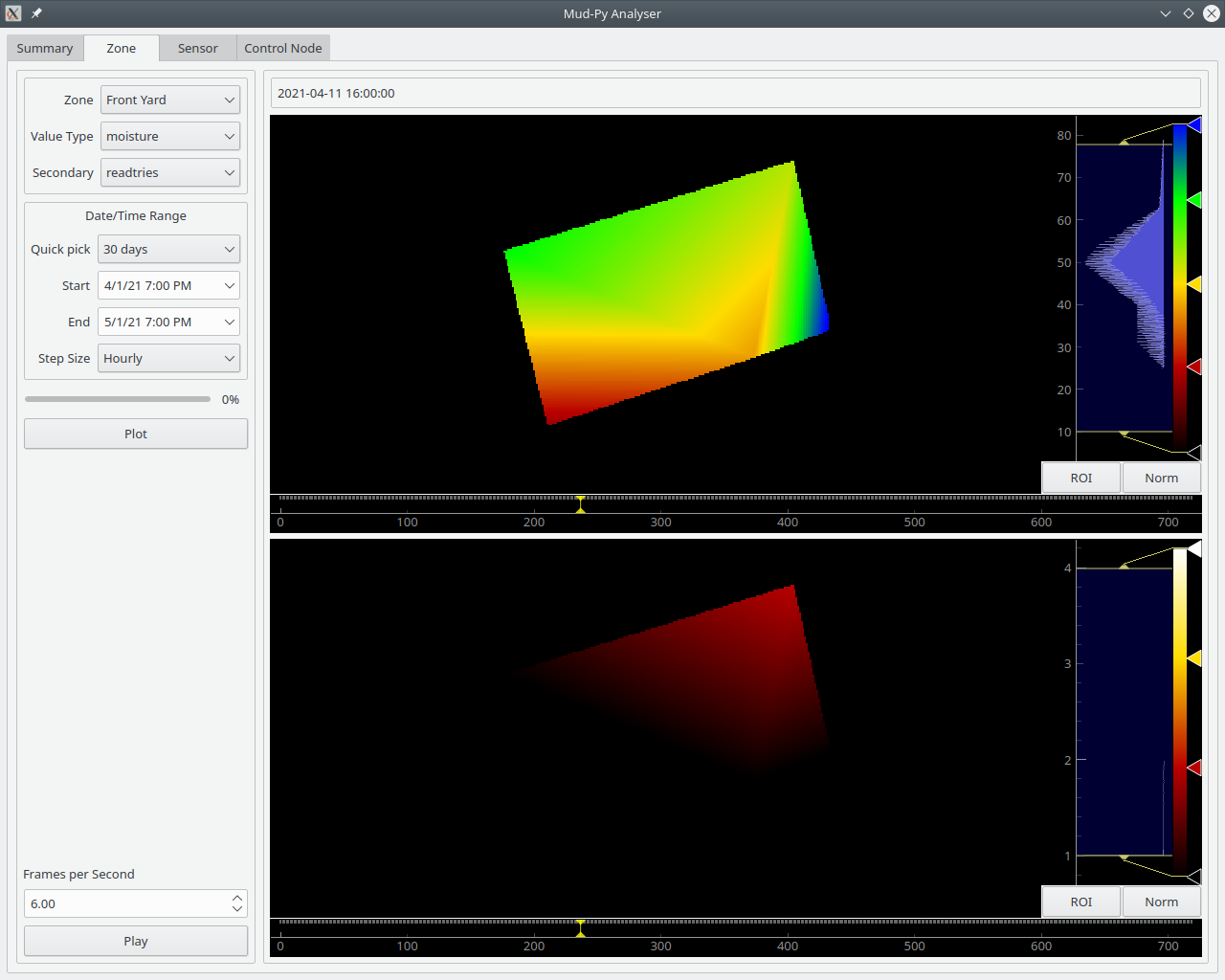
At about 5:00PM, it started raining again, but harder - the "readtries" hits maximum over a larger part of the yard:
 An hour later, and it is still raining. The lower part of the yard is collecting some serious moisture:
An hour later, and it is still raining. The lower part of the yard is collecting some serious moisture: A couple of hours later, and the rain is dying down again - the "readtries" have dropped over the whole yard:
A couple of hours later, and the rain is dying down again - the "readtries" have dropped over the whole yard: The whole yard has over 50 percent soil moisture. The water hasn't had time to seep down into the lower layers - it is still up in the top 10 centimeters (4 inches) or so where the sensors can "see" it.
The whole yard has over 50 percent soil moisture. The water hasn't had time to seep down into the lower layers - it is still up in the top 10 centimeters (4 inches) or so where the sensors can "see" it.An hour later, and the rain has stopped entirely:
 The moisture over most of the yard has dropped a bit. The lower left corner there has finally gotten a little water - it seems to lag behind the rest of the yard, even on other days.
The moisture over most of the yard has dropped a bit. The lower left corner there has finally gotten a little water - it seems to lag behind the rest of the yard, even on other days.Another hour (about 10:00 PM) and the moisture has evened out over the whole yard:
 The rain has pretty well stopped. It stayed overcast until around 13 April, with occasional showers. That afternoon and evening of 11 April was the hardest rain, though.
The rain has pretty well stopped. It stayed overcast until around 13 April, with occasional showers. That afternoon and evening of 11 April was the hardest rain, though.There you have it: A complete "sensors' eye view" of a rain shower.
Here is a complete video of the "rainy day."
 Joseph Eoff
Joseph Eoff
Discussions
Become a Hackaday.io Member
Create an account to leave a comment. Already have an account? Log In.